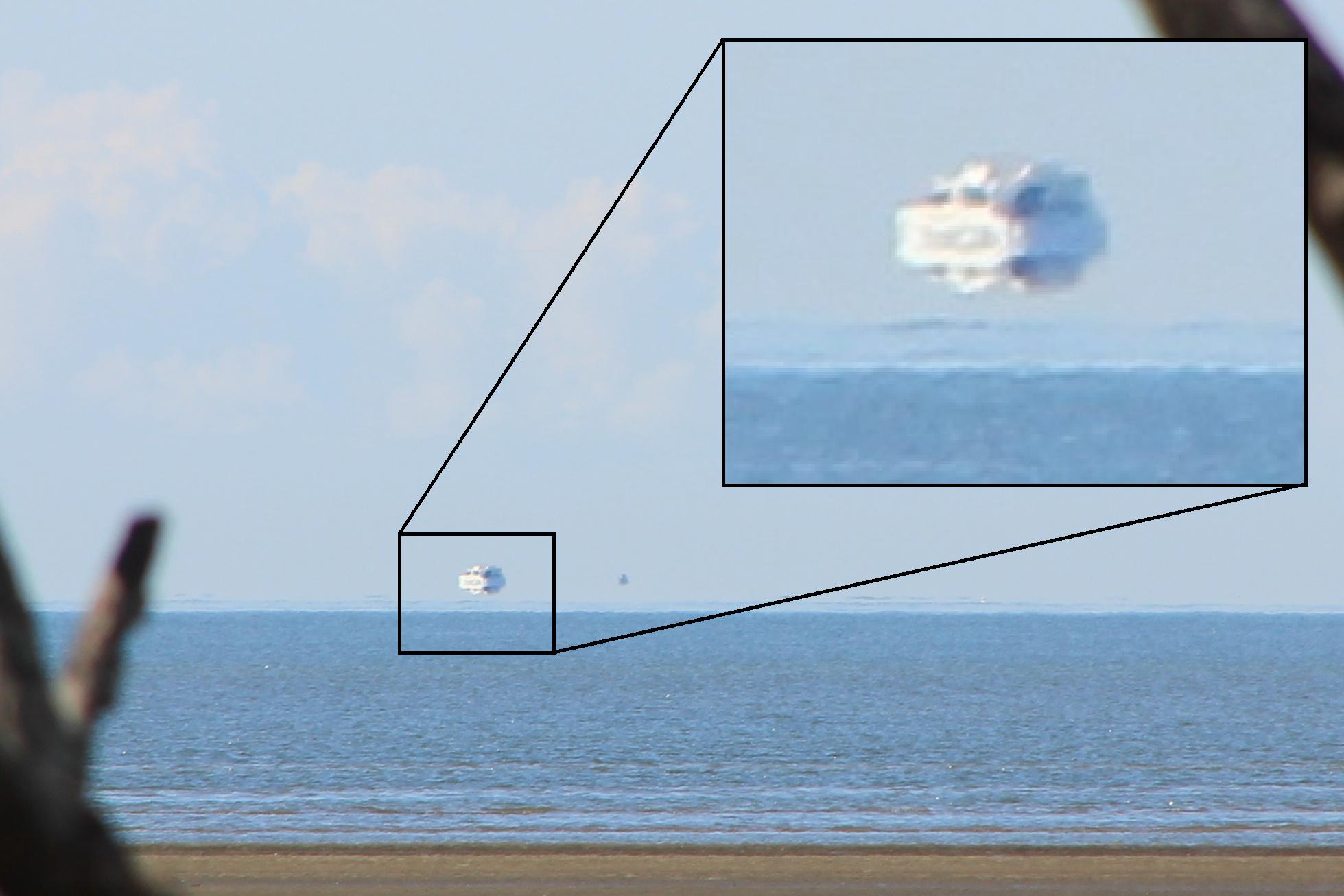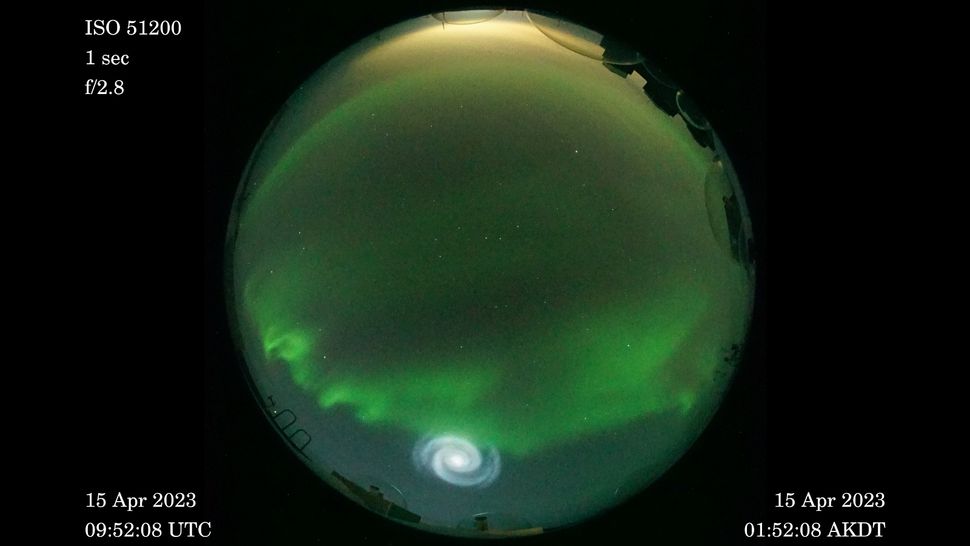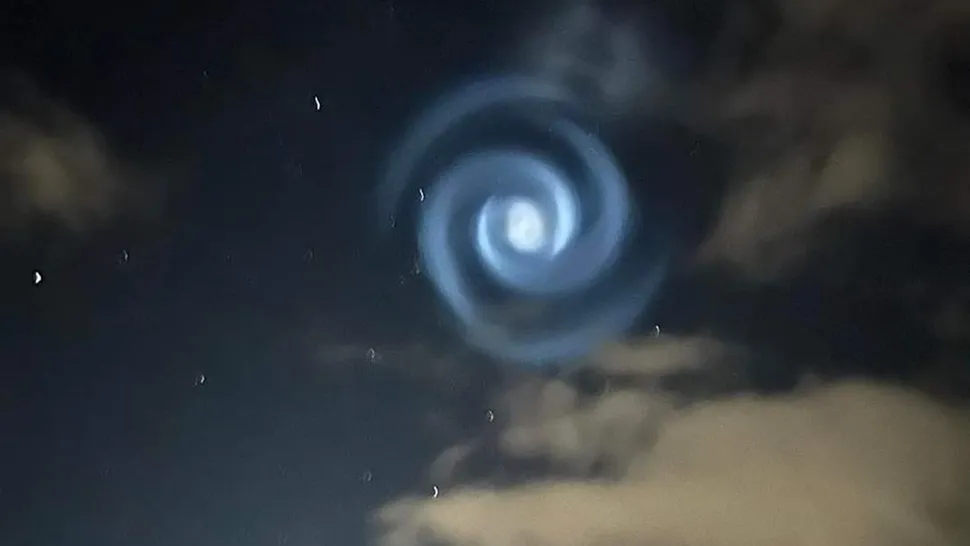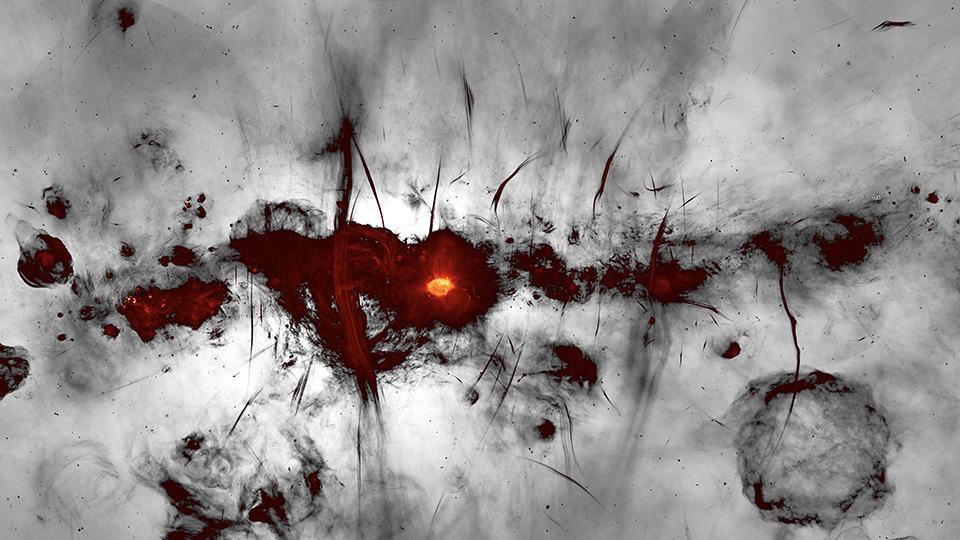Dark Matter?
https://www.sciencealert.com/new-st...atter-behaves-more-like-a-wave-not-a-particle
Now, this article doesn't describe exactly HOW galaxies behave that led astronomers to infer Dark Matter, but I'm curious about this gravitational lensing that is being observed.
Certainly light, as a particle that behaves like a wave, is highly likely to be effected by gravity. I can easily imagine the halos, the distorted images and the refracted positioning of objects we observe. However, there is another phenomenon that I have observed that is probably also going on. Reflection.
When you drive down a highway on a sunny day and you see, way off ahead of you, that glossy, shimmering, watery image on the horizon of the road ahead, most of us think, 'that's heated air rising off the black road surface causing shifting refractions of the light passing through it. It is the mirage we see in the dessert that looks like water up ahead. But that isn't what is really going on.
The next time you are out on the open highway on a sunny day, cold or hot, or in the mall, or on the water on a windless, flat calm day, look out at the ground, water, floor, as far as you can see. You will notice that the images reflected from beyond get sharper the more acute the angle your eye is with the surface.
For example, walking in the mall where there is a long stretch of tiled floor, you will see the upside down images of the people reflected in the floor. Up close, those reflections are indistinct, almost bury shadows, but clearly reflections, not shadows. As you look outward, farther away, those reflections get sharper, more distinct. Colors and shapes are easier to distinguish. A hundred meters or so away, the people walking in the mall will have reflections almost as clear as if they were walking on a mirror.
The thing is, my physics professor, when I mentioned this to him, said, "No. The road surface is non-reflective."
But, it isn't non-reflective. Most highways are not actually black, they are a conglomerate rock-like aggregate glued together by tar. Their surface is rough and the bits of mica, and other material act more to disperse light, then to absorb it.
When you look straight down at the ground, the light reflected back to your eye is a collection of photons that are gathered from numerous sources. The Sun outside, is the biggest source, but you also receive reflected light from other nearby objects reflecting their light onto the object you are looking at. Most of the light is actually reflected away in a whole bunch of different directions, diffusion. You only see the tiny percentage of light reflected to you specifically as a consequence of a chaotic spray of varied sources and intensities of light by statistical average.
Imagine the rough surface of a road. All the angles and textures that diffuse the reflected light. When that light is from directly overhead, by far, most of that light is scattered and lost as a coherent image. But, angle the light source. Use only light being reflected off the clouds, the blue sky, the distant trees, buildings, the one car that is far ahead of you. The light emanating from these objects only reflect off the very tops of those bumps and textures. They strike and reflect off angled surfaces that disperse less of their light and maintain the cohesion of their images to reach the viewer's, your, eye.
The next time you are out on an open highway, study those mirages. You will see the objects beyond them, upside-down, reflected, not refracted, in the road surface. The shimmering is from your constantly changing position which means the undulating surface of the road that reflects those images is also always changing.
I have been out on the water, on a bright, windless day and the islands in the distance actually looked like they were floating above the horizon. It wasn't the distortions of heated air coming off the water. The water became so reflective, at a certain acute angle, that there appeared to be a false horizon well below the real horizon and the islands were reflecting their contours below them in the water. But the sky was also reflected, and at a very specific angle, the reflections lost cohesion and created a clear false horizon that may even, itself, have been a reflection of the real horizon.

The distorted, reflected, refracted phenomenon is called Fata Morgana. It is a danger in aviation.
Anyhow, I would expect spherical astronomical objects to exhibit a similar false horizon. A moon, half peeking out behind a large planet might actually look like a whole moon showing itself next to a planet that would be mistakenly measured as much smaller in diameter than it really is. An error in size measurement would lead to an error in inference of density and its relationship to the gravity that held that moon in place. Could such a phenomenon work on a galactic level? Might it be possible that what we take for refraction is actually reflection?
-Will
https://www.sciencealert.com/new-st...atter-behaves-more-like-a-wave-not-a-particle
Now, this article doesn't describe exactly HOW galaxies behave that led astronomers to infer Dark Matter, but I'm curious about this gravitational lensing that is being observed.
Certainly light, as a particle that behaves like a wave, is highly likely to be effected by gravity. I can easily imagine the halos, the distorted images and the refracted positioning of objects we observe. However, there is another phenomenon that I have observed that is probably also going on. Reflection.
When you drive down a highway on a sunny day and you see, way off ahead of you, that glossy, shimmering, watery image on the horizon of the road ahead, most of us think, 'that's heated air rising off the black road surface causing shifting refractions of the light passing through it. It is the mirage we see in the dessert that looks like water up ahead. But that isn't what is really going on.
The next time you are out on the open highway on a sunny day, cold or hot, or in the mall, or on the water on a windless, flat calm day, look out at the ground, water, floor, as far as you can see. You will notice that the images reflected from beyond get sharper the more acute the angle your eye is with the surface.
For example, walking in the mall where there is a long stretch of tiled floor, you will see the upside down images of the people reflected in the floor. Up close, those reflections are indistinct, almost bury shadows, but clearly reflections, not shadows. As you look outward, farther away, those reflections get sharper, more distinct. Colors and shapes are easier to distinguish. A hundred meters or so away, the people walking in the mall will have reflections almost as clear as if they were walking on a mirror.
The thing is, my physics professor, when I mentioned this to him, said, "No. The road surface is non-reflective."
But, it isn't non-reflective. Most highways are not actually black, they are a conglomerate rock-like aggregate glued together by tar. Their surface is rough and the bits of mica, and other material act more to disperse light, then to absorb it.
When you look straight down at the ground, the light reflected back to your eye is a collection of photons that are gathered from numerous sources. The Sun outside, is the biggest source, but you also receive reflected light from other nearby objects reflecting their light onto the object you are looking at. Most of the light is actually reflected away in a whole bunch of different directions, diffusion. You only see the tiny percentage of light reflected to you specifically as a consequence of a chaotic spray of varied sources and intensities of light by statistical average.
Imagine the rough surface of a road. All the angles and textures that diffuse the reflected light. When that light is from directly overhead, by far, most of that light is scattered and lost as a coherent image. But, angle the light source. Use only light being reflected off the clouds, the blue sky, the distant trees, buildings, the one car that is far ahead of you. The light emanating from these objects only reflect off the very tops of those bumps and textures. They strike and reflect off angled surfaces that disperse less of their light and maintain the cohesion of their images to reach the viewer's, your, eye.
The next time you are out on an open highway, study those mirages. You will see the objects beyond them, upside-down, reflected, not refracted, in the road surface. The shimmering is from your constantly changing position which means the undulating surface of the road that reflects those images is also always changing.
I have been out on the water, on a bright, windless day and the islands in the distance actually looked like they were floating above the horizon. It wasn't the distortions of heated air coming off the water. The water became so reflective, at a certain acute angle, that there appeared to be a false horizon well below the real horizon and the islands were reflecting their contours below them in the water. But the sky was also reflected, and at a very specific angle, the reflections lost cohesion and created a clear false horizon that may even, itself, have been a reflection of the real horizon.

The distorted, reflected, refracted phenomenon is called Fata Morgana. It is a danger in aviation.
Anyhow, I would expect spherical astronomical objects to exhibit a similar false horizon. A moon, half peeking out behind a large planet might actually look like a whole moon showing itself next to a planet that would be mistakenly measured as much smaller in diameter than it really is. An error in size measurement would lead to an error in inference of density and its relationship to the gravity that held that moon in place. Could such a phenomenon work on a galactic level? Might it be possible that what we take for refraction is actually reflection?
-Will



